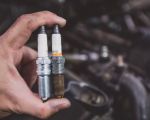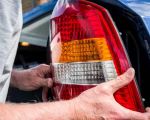How to Repair Car Body Damage
Car body damage is a common issue that many vehicle owners face, whether due to accidents, harsh weather conditions, or simple wear and tear. As a car enthusiast, I’ve had my fair share of dealing with dents, scratches, and other imperfections on my vehicle. Over the years, I’ve learned the best ways to repair car body damage, saving time and money by handling some repairs myself. In this article, I’ll walk you through the process of fixing car body damage step by step and share some tips that can help restore your car’s appearance and protect its resale value.

G&C Auto Body
575 W San Carlos St, San Jose, CA 95126, USA
1. Assess the Damage to Your Car
Before diving into any repair work, it's crucial to assess the extent of the damage. This will help you determine whether you can fix it yourself or if you should seek professional help. The type of damage plays a significant role in how much effort and resources you'll need.
- Minor Dents: Small dings or dents that haven’t caused paint damage can often be fixed at home with a few tools.
- Scratches: Light scratches that don’t penetrate through the paint can be repaired with simple products.
- Major Damage: Large dents, broken panels, or damage that affects the structural integrity may require professional help.
2. Gathering the Tools and Materials
If you’ve decided that you can handle the repair yourself, the next step is gathering the right tools and materials. Some basic items will help you get started:
- Body Filler: Ideal for filling in larger dents and imperfections.
- Sandpaper: To smooth out rough surfaces after applying body filler.
- Primer and Paint: These are necessary to restore the car's color and finish after the repair.
- Dent Puller or PDR Kit: Great for pulling out smaller dents without damaging the surrounding area.
- Heat Gun or Hair Dryer: Helpful for softening the metal or paint when using certain repair techniques.
3. Fixing Small Dents Using a Dent Puller
For smaller dents, I’ve found that a dent puller works wonders. These kits are relatively inexpensive and easy to use. The process generally involves:
- Clean the Area: Wash the affected area thoroughly to remove any dirt and debris.
- Attach the Puller: Follow the instructions provided with the dent puller kit. Typically, you'll attach a pulling tab to the center of the dent.
- Use the Pulling Tool: Gently pull on the dent puller’s handle until the dent pops out. This may take several attempts depending on the severity of the dent.
- Refining the Surface: After removing the dent, you can smooth out the area with sandpaper.
4. Repairing Scratches
Scratches on the car's paint are common, but they can often be fixed without much hassle. Here's how I handle scratches:
- Clean the Scratch Area: Before applying any products, clean the area with soap and water to remove debris.
- Use Scratch Remover: If the scratch is light, I apply a scratch remover product and rub it in with a microfiber cloth. This typically works for superficial scratches.
- Polishing: After using the scratch remover, I always polish the area to restore its shine.
- Touch-Up Paint: For deeper scratches, I use touch-up paint that matches my car's color. Carefully apply the paint to the scratched area, then smooth it out using a fine brush.
5. Applying Body Filler for Larger Damage
For larger dents or more severe damage, body filler is an effective solution. Here’s how I use it:
- Clean the Area: Clean the area where the body filler will be applied.
- Mix the Filler: Body fillers usually come with a hardener. Mix the two components according to the instructions on the package.
- Apply the Filler: Spread the filler over the damaged area with a spatula. Be sure to apply it evenly and allow it to dry for the recommended time.
- Sanding: Once the filler is dry, sand it down to make it smooth and level with the rest of the car’s surface.
- Painting: After sanding, apply primer and paint to match the car’s color. This will give your car a smooth, uniform finish.
6. Dealing with More Complex Damage
Sometimes, despite your best efforts, the damage to your car might be too severe for a DIY repair. In these cases, it’s best to consult a professional body shop. Major body damage may require new parts, paint jobs, or even structural repairs that can’t be done at home.

G&C Auto Body
575 W San Carlos St, San Jose, CA 95126, USA
Conclusion
Repairing car body damage can be a rewarding and cost-effective way to maintain your vehicle. By assessing the damage, gathering the necessary tools, and applying the right techniques, you can restore your car’s appearance. However, it’s important to know when it’s best to call in professionals for larger or more complex repairs. With the right approach, you can keep your car looking great and avoid costly repairs in the future.




























